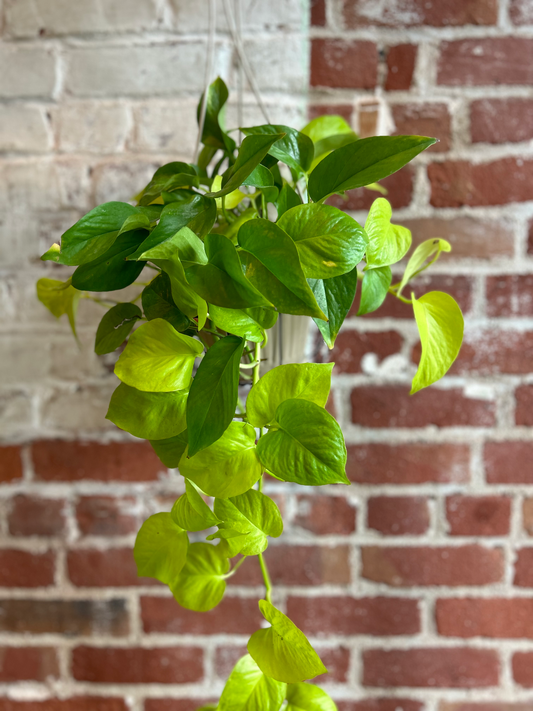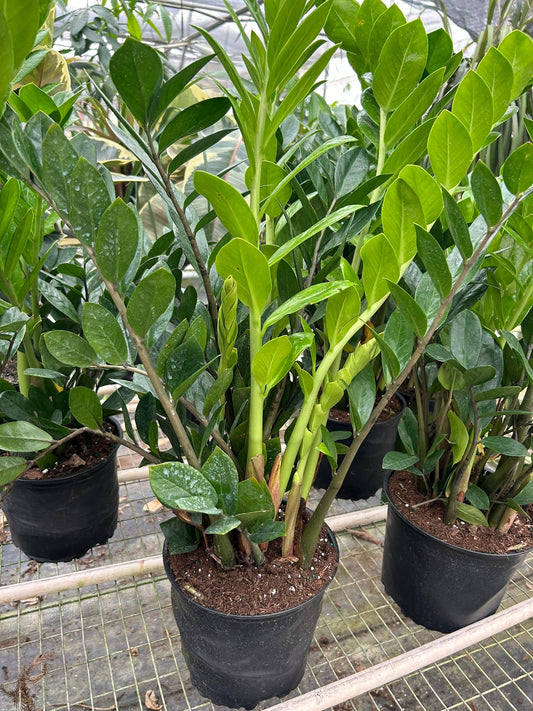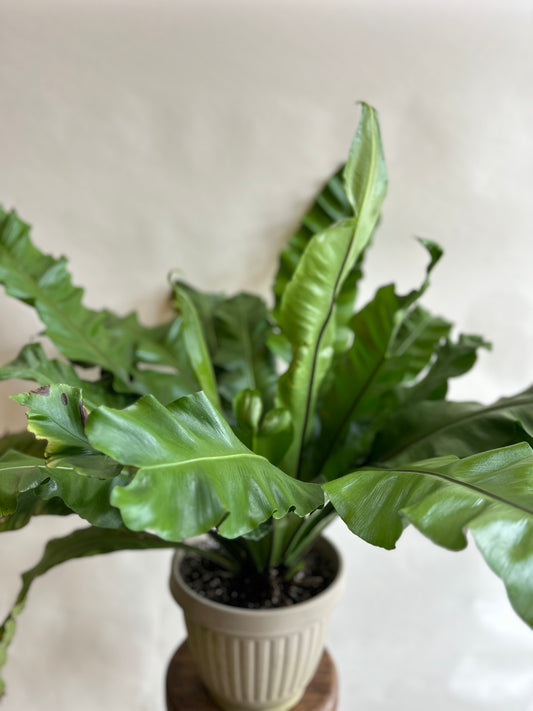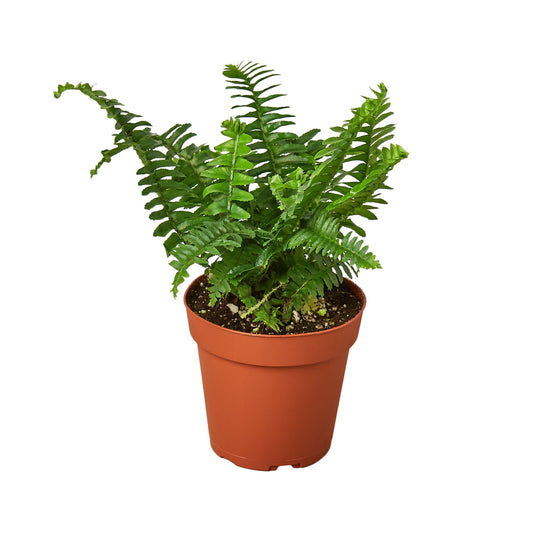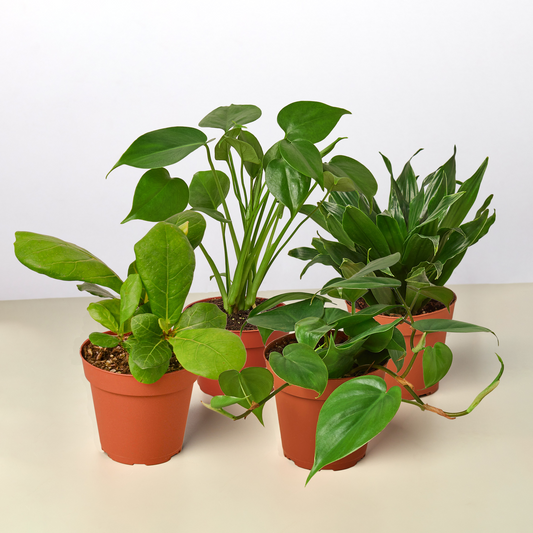How To Make Your Own DIY Philodendron Verrucosum Fertilizer At Home
Cafe Planta Team
Have you ever looked at your Philodendron Verrucosum and thought, "I wish I could give you the best care possible"? You're not alone. Many plant parents feel the same way about their leafy companions. One way to show your love is by providing your plant with homemade fertilizer that caters specifically to its needs, without the added chemicals often found in store-bought options.
In this post, we'll walk through the steps of making your own DIY fertilizer for this stunning plant. We'll cover everything from understanding its nutritional needs to creating a balanced concoction at home. So, whether you're a seasoned plant lover or just starting out, you'll find useful tips and tricks to keep your Philodendron Verrucosum thriving.
Understanding Your Philodendron Verrucosum's Nutritional Needs
Before we get our hands dirty, it's essential to understand what makes the Philodendron Verrucosum tick. These plants, native to Central and South America, thrive in environments with high humidity and filtered light. They have specific nutritional needs that, when met, result in vibrant foliage and healthy growth.
The main nutrients your plant needs are nitrogen (N), phosphorus (P), and potassium (K). These are often referred to as NPK and are crucial for different plant processes. Nitrogen helps with leaf growth, phosphorus is vital for root development, and potassium aids in overall plant health, including disease resistance.
But that's not all. Philodendron Verrucosum also benefits from trace elements like calcium, magnesium, and iron. These micronutrients play smaller but no less important roles, such as chlorophyll production and enzyme activation. Ensuring your fertilizer contains a balance of these nutrients is key to keeping your plant happy.
Gathering Ingredients for Your DIY Fertilizer
Creating your own fertilizer isn't as daunting as it sounds. Most of the ingredients can be found right in your kitchen or local grocery store. Here's a list of things you'll need to get started:
- Banana peels: These are rich in potassium, which is essential for plant health.
- Eggshells: Ground eggshells provide calcium, helping to strengthen cell walls.
- Used coffee grounds: Coffee grounds add nitrogen to the mix and improve soil structure.
- Epsom salt: A great source of magnesium and sulfur, promoting chlorophyll production.
- Compost: A well-rounded source of nutrients, compost improves soil health and provides a slow-release of nutrients.
With these ingredients, you can craft a fertilizer that caters to the unique needs of your Philodendron Verrucosum. Plus, it's a great way to recycle kitchen waste and reduce your carbon footprint.
Preparing the Ingredients
Now that you've gathered your ingredients, it's time to prepare them for use. This step is crucial as it ensures that the nutrients are readily available for your plant to absorb.
Banana Peels: Cut the banana peels into small pieces and let them dry out for a few days. Once they're completely dry, grind them into a fine powder using a blender or food processor. This powder can be mixed directly into the soil or steeped in water to make a banana tea.
Eggshells: Rinse the eggshells to remove any residue and let them dry. Like the banana peels, grind them into a fine powder. This will make it easier for the calcium to be absorbed by the plant roots.
Used Coffee Grounds: Allow your used coffee grounds to dry out completely. This prevents mold from developing when you store them. Coffee grounds can be sprinkled on top of the soil or mixed in for a nitrogen boost.
Epsom Salt: Simply dissolve Epsom salt in water. A typical ratio is one tablespoon per gallon of water. This mixture can be used to water your Philodendron Verrucosum, delivering magnesium and sulfur directly to the roots.
Mixing Your Fertilizer
With your ingredients ready, it's time to mix them into a potent fertilizer blend. The goal is to create a balanced mix that provides all the necessary nutrients without overwhelming your plant.
Here's a simple recipe to get you started:
- 1 part ground banana peel
- 1 part ground eggshell
- 1 part used coffee grounds
- 1 part compost
Mix these ingredients thoroughly in a container. Once combined, you can either spread the mixture on the top layer of your plant's soil or gently work it into the soil. This allows the nutrients to slowly release as you water your plant, providing a steady supply of nourishment.
For an added boost, you can water your plant with the Epsom salt solution once a month. This ensures your Philodendron Verrucosum gets the magnesium it needs without overdoing it.
Monitoring Plant Health and Adjusting the Mix
After applying your homemade fertilizer, it's essential to keep an eye on your plant's health. Look for signs of nutrient deficiencies or excesses, such as yellowing leaves, stunted growth, or leaf drop. These can indicate that your fertilizer needs tweaking.
If you notice yellowing leaves, your plant might need more nitrogen. Consider increasing the amount of coffee grounds in your mix. Conversely, if the leaves start to curl or show brown edges, you might be over-fertilizing. In this case, reduce the frequency of application and ensure your plant is not waterlogged.
Maintaining a close watch on your Philodendron Verrucosum allows you to make timely adjustments, ensuring it continues to thrive. Remember, every plant is unique, and what works for one might not work for another. Patience and observation are your best tools.
Benefits of Using Homemade Fertilizer
Why bother making your own fertilizer when there are plenty of options available at the store? Well, there are several benefits to going the DIY route:
- Control over ingredients: You know exactly what's going into your fertilizer, ensuring no harmful chemicals are introduced to your plant.
- Cost-effective: Most of the ingredients are kitchen waste, making this an economical choice.
- Environmental impact: By recycling waste, you're reducing landfill contributions and promoting sustainable practices.
- Customization: You can adjust the mix based on your plant's specific needs, something store-bought fertilizers might not offer.
These benefits make homemade fertilizers a great option for plant parents looking to take a more active role in their plant care routine.
Troubleshooting Common Fertilizer Issues
Even with the best intentions, things can sometimes go awry. Here are a few common fertilizer issues you might encounter and how to troubleshoot them:
White Crust on Soil: This could be a sign of salt build-up from over-fertilizing. To fix this, flush the soil with water to wash away excess salts. Ensure your pot has proper drainage to prevent waterlogging.
Slow Growth: If your plant isn't growing as expected, it might not be getting enough nutrients. Consider increasing the frequency of your fertilizer application or adjusting the nutrient balance.
Leaf Discoloration: Yellowing or browning leaves can be a sign of nutrient imbalance. Adjust the proportions of your mix, focusing on the deficiency indicated by the leaf color.
By addressing these issues promptly, you can ensure your Philodendron Verrucosum remains healthy and vibrant.
Storing Your DIY Fertilizer
Once you've made your fertilizer, you'll want to store it properly to maintain its effectiveness. Here are some tips for storing your homemade mix:
- Dry ingredients: Keep them in an airtight container in a cool, dry place. This prevents moisture from degrading the quality of your fertilizer.
- Banana tea or Epsom salt solution: Store these in a sealed container in the fridge for up to a week. Ensure they are labeled to avoid confusion with other household items.
Proper storage extends the life of your fertilizer, ensuring you always have a supply ready for your Philodendron Verrucosum.
Additional Tips for a Thriving Philodendron Verrucosum
While fertilizer plays a crucial role in plant health, it's not the only factor to consider when caring for your Philodendron Verrucosum. Here are some additional tips to promote growth and vitality:
- Lighting: Provide bright, indirect light. Direct sunlight can scorch the leaves, while too little light can stunt growth.
- Humidity: Aim for high humidity levels, around 60% or more. Using a humidifier or placing a pebble tray with water near your plant can help maintain the right environment.
- Watering: Water when the top inch of soil is dry. Overwatering can lead to root rot, while underwatering can cause wilting.
- Pruning: Regularly remove dead or damaged leaves to encourage new growth and maintain plant health.
By combining these care tips with your homemade fertilizer, you'll create the perfect environment for your Philodendron Verrucosum to flourish.
Final Thoughts
Creating your own fertilizer for your Philodendron Verrucosum is a rewarding way to connect with your plant and ensure it gets the nutrients it needs. By understanding its needs, gathering the right materials, and monitoring its health, you'll be well on your way to a thriving, happy plant.
At Cafe Planta, we believe in the power of plants to transform spaces and connect us with nature. Whether you're seeking advice, plants, or plant-themed apparel, we're here to help. Feel free to email us, or reach out via our Instagram. We're excited to share our love of plants with you!


